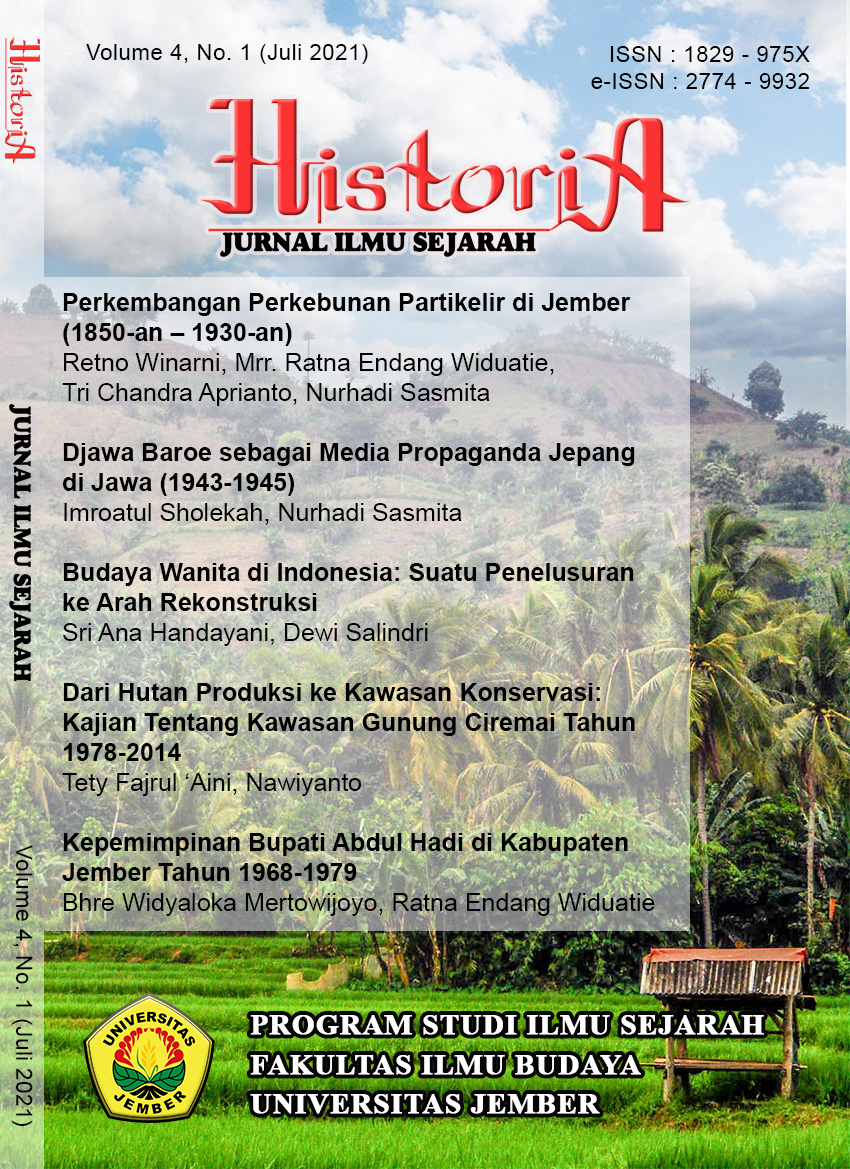Perkembangan Perkebunan Partikelir di Jember (1850-an – 1930-an)
Abstract
This study was aimed to track how the history of plantations in Jember from the 1850s-1930s. When did plantations arise in Jember? What types of plants were developed on Jember plantations? How was the development of the plantation quantitatively? And what was the impact of the existence of plantations on the development of Jember and its people. The method in this study is a historical method which includes heuristic, criticism, interpretation and historiography. The results of this study are that plantations in Jember developed along with the development of colonial power in the Belada Indies, precisely since the VOC era, but experienced rapid development starting from the implementation period culture stelsel, but reached its peak in liberal times, and plantations also experienced a period of ebb as colonial power receded as well. The conclusion is that there is a parrarel relationship between plantation development and the development of colonial power.

This work is licensed under a Creative Commons Attribution-ShareAlike 4.0 International License.











